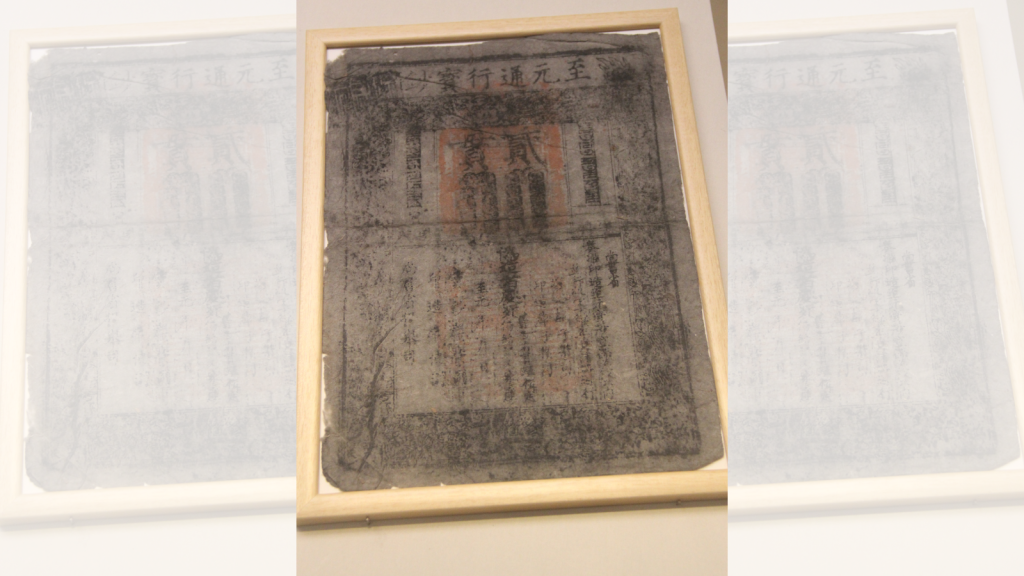The Silk Road, a network of trade routes connecting East and West, was far more than just a path for merchants. This ancient superhighway shaped our world in ways we’re still discovering today. From the spread of religions to the exchange of scientific ideas, the Silk Road was a melting pot of cultures and innovations. Its influence stretched far beyond the obvious trade of silk and spices. In fact, many aspects of our modern world can trace their roots back to this incredible network of routes.
The Spread of Buddhism

Buddhism traveled from India to China along the Silk Road. Monks and merchants carried Buddhist texts and ideas, leading to the religion’s spread across Asia. This cultural exchange transformed societies, influencing art, philosophy, and daily life in countless communities along the route. The cave temples of Dunhuang in China stand as a testament to this spread, featuring thousands of Buddhist sculptures and manuscripts.
The Invention of Paper Money

Paper money, first used in China, spread westward via the Silk Road. This revolutionary concept changed how trade was conducted, making large transactions easier and safer. The idea eventually reached Europe, paving the way for modern banking systems. Marco Polo’s accounts of paper money in China helped introduce the concept to European merchants and bankers.
The Black Death’s Journey

The Silk Road wasn’t just a conduit for goods and ideas – it also facilitated the spread of disease. The bubonic plague, or Black Death, likely traveled along these trade routes in the 14th century. This pandemic reshaped the demographics and economies of Europe and Asia, marking a turning point in world history. Recent DNA studies of plague victims have confirmed the disease’s origins in Central Asia, highlighting the Silk Road’s role in its spread.
The Rise of the Mongolian Empire

The Silk Road played a crucial role in the expansion of the Mongolian Empire. Genghis Khan and his successors used these established trade routes to move armies and maintain control over their vast territory. This led to one of the largest contiguous land empires in history. The Mongols also improved and protected the Silk Road, creating a period known as Pax Mongolica, which facilitated increased trade and cultural exchange.
The Spread of Gunpowder Technology

Gunpowder, invented in China, made its way west along the Silk Road. This technology revolutionized warfare and changed the balance of power in many regions. The spread of gunpowder had far-reaching effects on military strategies and political landscapes across Eurasia. Its arrival in Europe in the 13th century led to the development of cannons and firearms, fundamentally altering the nature of warfare.
The Exchange of Astronomical Knowledge

Astronomers from different cultures shared their knowledge along the Silk Road. This exchange led to advancements in understanding celestial bodies and improved navigation techniques. Many star names we use today have Arabic origins, a testament to this cross-cultural scientific exchange. The astrolabe, an ancient astronomical instrument, was perfected through this exchange and became crucial for navigation during the Age of Exploration.
The Development of New Musical Instruments

Musical instruments traveled along the Silk Road, leading to the creation of new sounds and styles. For example, the lute, which originated in the Middle East, eventually evolved into the European guitar. This cultural exchange enriched musical traditions across continents. The Chinese erhu and the Persian santur are other examples of instruments that spread and evolved through Silk Road exchanges.
The Introduction of New Crops

The Silk Road facilitated the spread of various crops across different regions. Foods like apples, carrots, and walnuts were introduced to new areas, diversifying diets and agricultural practices. This exchange had a lasting impact on global cuisine and farming methods. The introduction of cotton from India to China via the Silk Road revolutionized textile production in East Asia.
The Spread of Mathematics

Mathematical concepts and number systems traveled along the Silk Road. The Indian numerical system, including the concept of zero, spread to the Middle East and then to Europe. This exchange laid the foundation for modern mathematics and scientific advancements. The works of ancient Greek mathematicians, preserved and expanded upon by Islamic scholars, also made their way back to Europe via the Silk Road.
The Evolution of Language

Languages evolved and borrowed from each other along the Silk Road. Words related to trade, like ‘bazaar’ and ‘caravan’, entered many languages. This linguistic exchange enriched vocabularies and facilitated communication between diverse cultures. The development of lingua francas, or common languages, along the route further facilitated trade and cultural exchange.
The Spread of Artistic Styles

Art styles and techniques were shared along the Silk Road, influencing visual cultures across continents. For instance, Buddhist art from India influenced Chinese sculpture, while Persian motifs appeared in European textiles. This exchange led to the development of new artistic traditions and aesthetics. The famous blue and white porcelain of China, for example, was developed using cobalt pigments imported from Persia via the Silk Road.
The Exchange of Medical Knowledge

Medical practices and herbal remedies were shared among different cultures along the Silk Road. Chinese acupuncture spread westward, while Greco-Roman medical texts traveled east. This exchange contributed to the development of medical practices in various regions. The Canon of Medicine by Persian physician Ibn Sina (Avicenna) became a standard medical text in Europe for centuries, showcasing the far-reaching impact of this medical exchange.
The Spread of Polo

The game of polo, originating in Central Asia, spread both east and west along the Silk Road. It became popular among nobles and royalty in various cultures. The game’s spread illustrates how even leisure activities were exchanged along these trade routes. Polo’s popularity in Persia led to the development of specialized breeding programs for polo ponies, influencing horse breeding practices across regions.
The Development of New Technologies

Various technologies were shared and improved along the Silk Road. For example, glassmaking techniques spread from the Middle East to China, while papermaking moved from China to the West. This exchange of knowledge spurred technological advancements in many fields. The spread of sericulture (silk production) techniques from China to other regions had a profound impact on textile industries and trade dynamics.
The Formation of Multicultural Cities

The Silk Road led to the growth of multicultural cities at key points along the route. Places like Samarkand and Chang’an became melting pots of different cultures, religions, and ideas. These cosmopolitan centers played crucial roles in facilitating cultural exchange and shaping world history. The city of Baghdad, founded in 762 CE, became a major intellectual center where scholars from various cultures collaborated, translating and preserving ancient texts and advancing knowledge in numerous fields.
Katy Willis is a writer, master herbalist, master gardener, and certified canine nutritionist who has been writing since 2002. She’s finds joy in learning new and interesting things, and finds history, science, and nature endlessly fascinating.

